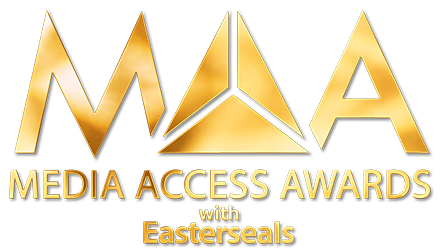How do you make creative fields more accessible for young creators?
Multidisciplinary theater artist Tomi Tsunoda recently joined the low-residency MFA program at Goddard College. Early in her orientation, new students received a warm welcome from Suzy Shedd from the Access and Disability Support (ADS) office at the college.
“I’m so grateful that the MFAIA at Goddard is the kind of place that it is,” Tsunoda wrote in an inspiring Facebook tribute to the college. First, she appreciated how the college offered comfort and fidget items for students. Suzy Shedd told the students:
“This will be a session where I talk to you a lot and deliver a lot of information, and it’s not interactive or participatory, and I know it can be hard to sit through that. If having something tactile helps keep you present and helps you get through it, feel free to take one.”
Shedd also acknowledged that “some people have a hard time absorbing large blocks of text, and if that’s you, you can ask your advisor to put their written feedback into bullet point form.”
Finally, Shedd shared a download link for Dyslexie (“a font designed for people with dyslexia and other text processing issues.
Accessibility is absolutely crucial for creatives with disabilities at every stage of the creative journey, from writing a script to shooting the film to participating in an awards ceremony.
We’ve rounded up a few of the resources Tsunoda discovered at that orientation session, along with other free tools to champion accessibility in the arts.
1.Dyslexie: a font designed for people with dyslexia and other text processing issues.
2. Text to Speech Tools: The free WordTalk text-to-speech plugin for Microsoft Word will create an audio version of all text in a document.
3. Caption your videos: This video gives instructions on how to create and edit captions on your YouTube videos–using free and automated tools.
4. Screen readers: Software used by blind or visually impaired people to read the content of the computer screen. Examples include JAWS for Windows, NVDA, or Voiceover for Mac.
Screen magnification software: Allow users to control the size of text and or graphics on the screen. Unlike using a zoom feature, these applications allow the user to have the ability to see the enlarged text in relation to the rest of the screen. This is done by emulating a handheld magnifier over the screen.
5. Speech input software: Provides people with difficulty in typing an alternate way to type text and also control the computer. Users can give the system some limited commands to perform mouse actions. Users can tell the system to click a link or a button or use a menu item. Examples would be Dragon Naturally Speaking for Windows or Mac. Please note both Windows and Mac have some speech recognition utilities, but they cannot be used to browse the web.
6. Alternative input devices: Some users may not be able to use a mouse or keyboard to work on a computer. These people can use various forms of devices, such as:
7. Head pointers: A stick or object mounted directly on the user’s head that can be used to push keys on the keyboard. This device is used by individuals who have no use of their hands.
8. Motion tracking or eye tracking: This can include devices that watch a target or even the eyes of the user to interpret where the user wants to place the mouse pointer and moves it for the user.
9. Single switch entry devices: These kinds of devices can be used with other alternative input devices or by themselves. These are typically used with on-screen keyboards. The on-screen keyboard has a cursor move across the keys, and when the key the user wants is in focus, the user will click the switch. This can also work on a webpage: the cursor can move through the webpage, and if the user wants a to click on a link or button when that link or button is in focus, the user can activate the switch.
Additional resources credited to the UC Berkeley assistive technology website.

